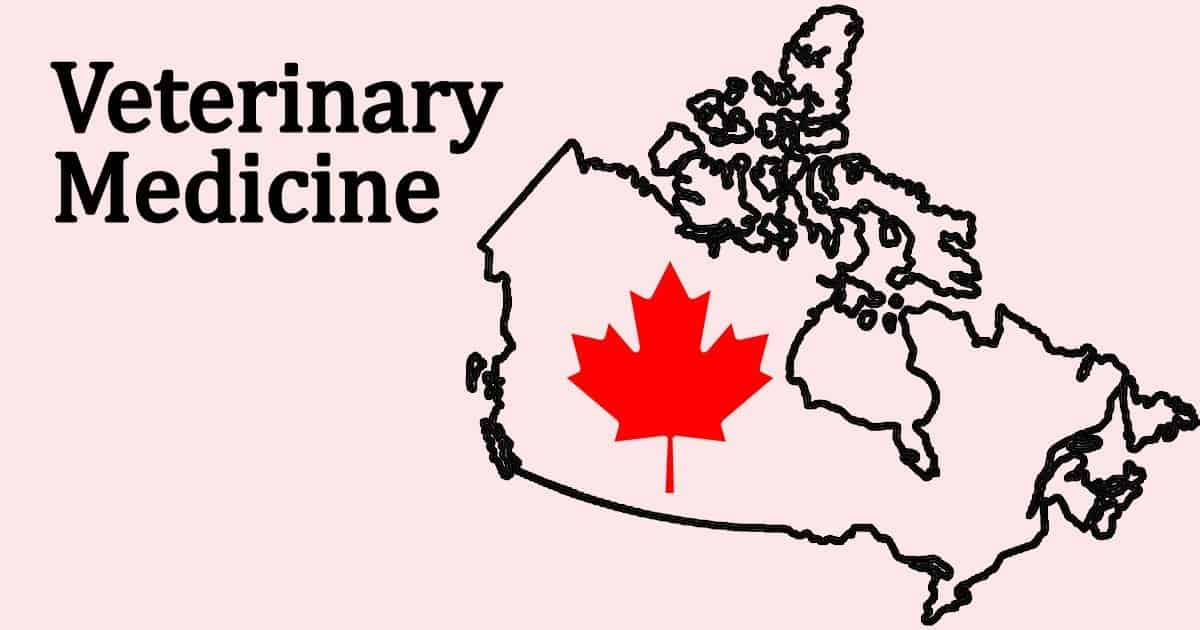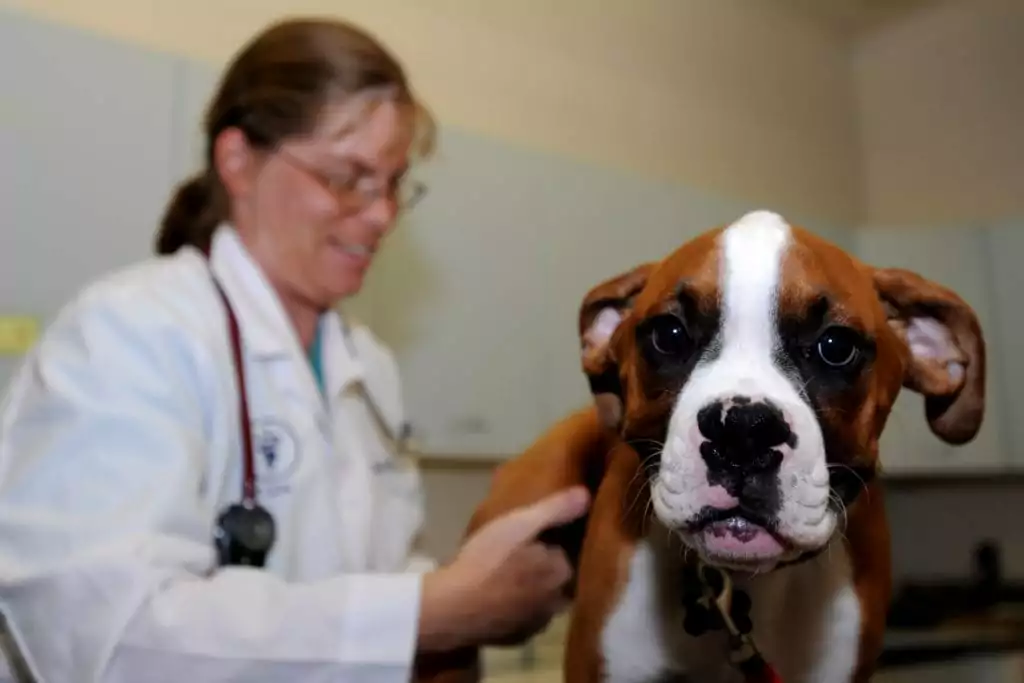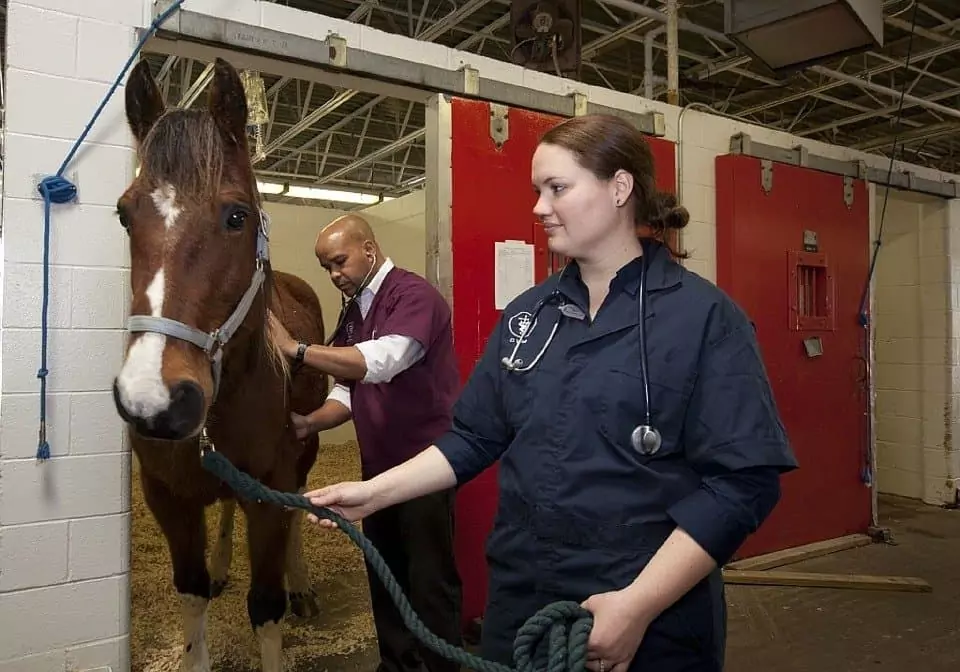General Data on Owning Pets in Canda
We covered identical topics regarding vet schools in Canada, Europe, the USA, and Australia and now it’s time to do the same for the country where the veterinary profession ranks highly respectable.
Most of the data we will present is contained in the database of the CVMA (Canadian Veterinary Medical Association) and will serve as an indicator for people to acknowledge the possibilities and benefits of being a vet professional in Canada. The data is yearly updated and the one presented is from 2017.
In the far north of the American continent, there are approximately 12.921 veterinarians working both with livestock, wildlife, and companion animals for the major part. Currently, in Canada, the majority of veterinarians are female, 7.881 of vets to be exact, and the male veterinarians count 5.168
Like almost everywhere, the 61% favoring female professionals increases yearly and constantly. The number of private veterinary practices in Canada is 3.301.
Out of 10 Canadian provinces, most of the veterinarians work in Alberta, British Columbia, and Manitoba (numbers are suitable to the human population in the areas). While at the bottom of the list the three bottom territories are Saskatchewan, the Territories, and Unknown Locations across the country.

The approximate number of pets living in Canada is more than 15.2 million, 7.7 million dogs, and 8.1 million cats. Canadian farmers take care of approximately 3.53 million cattle, 14.1 million hogs, and 1 million sheep.
The sheep and cattle population follows a negative trend of 1.9% annual decrease, and the hog population tends to increase as it is a very profitable trend currently, as per 2020 statistics via the Statistics Canda website.
The encouraging fact is that the pet population in Canada holds a constant positive growth trend. This is mostly a reflection of the increased social relationship humans share with companion animals and the use of trained working animals for people with special needs.

The population of companion animals in Canada has increased by about 10% in the last decade. The domestic cat population grew faster than dog population and now cats are the number one pet owned in the country.
At the moment, around 35% of households in Canada own at least one dog and 38% percent take care of at least one cat.
Veterinary Legislation in Canada
To be a doctor of animal health in Canada you need to have trained at a University for at least six years in order to earn the DVM (Doctor of Veterinary Medicine) degree and furthermore get licensed so that you can provide medical care for animals.
Licensed Veterinarians in Canada besides caring for and treating sick animals are able to work in various fields such as animal welfare, environmental protection, government, industry, research, teaching, public health, food safety, shelter medicine, etc.
Becoming a Licensed Veterinarian in Canada means that you successfully passed the NAVLE (North American Veterinary Licensing Exam). Depending on territory or province there may be some additional requirements as well.
Provincial licensing bodies need to be contacted when students that finished school outside Canada are planning to work and obtain a license here. This means that you will be put through a process of degree equivalency and if your school is non-accredited you will need to get a CQ (Certificate of Qualification) by passing the National Examining Board examination.
Besides North America, the NAVLE is offered at some Prometric centers overseas in Europe, Latin America, Asia, Africa, Australia, and New Zealand.
A List of Vet Schools in Canada
At the moment, there are five veterinary schools in Canada offering the DVM degree. Admission priorities apply to the residents of the region where the college is situated.
The accredited veterinary schools in Canada include:
- The Atlantic Veterinary College (AVC) – University of Prince Edward Island; Charlottetown, PEI
- Faculté De Médicine Vétérinaire (FVM) – Université de Montréal; St-Hyacinthe, QC
- The Ontario Veterinary College (OVC) – University of Guelph, Ontario
- The Western College of Veterinary Medicine (WCVM) – University of Saskatchewan; Saskatoon, Saskatchewan
- University of Calgary – Faculty of Veterinary Medicine (UCVM) – Calgary, Alberta

Students interested in becoming a DVM in the future should consider taking high school-level courses in science such as chemistry, biology, and physics. Discussing this with a guidance counselor that is well informed will help them build a solid foundation on which continuous education can rest.
Some other subjects to be considered are social sciences and mathematics. Those individuals that plan to work in a private clinic upon graduation will find great use in taking management, entrepreneurship, and business administration courses.
The number of students in the veterinary schools in Canada is limited. Approximately 350 new veterinarians graduate each year. Therefore, good grades and useful courses are recommended prior to admission, as well as voluntary experience or employment with a certified veterinarian.
As we said before, obtaining a DVM degree in Canada requires a minimum of six years of university education. Usually, that consists of two years of pre-vet study which can be done at a regular university, and four years of studying courses at one of the five vet colleges in the country.
The leading veterinary organization in Canada representing Canadian veterinarians around the world is the Canadian Veterinary Medical Association (CVMA). The voice of the profession advocates animal welfare, optimal care for animals, and optimal care for the people and the environment.

Veterinary professionals and students can become members of the organization, enjoy the benefits the membership offers and fight together for the three strategic priorities: leadership on national veterinary issues, animal welfare advocacy, and a successful career along with a balanced life.
Career options
The labor market in Canada is in constant demand of new veterinarians and veterinary technicians which makes it even easier for overseas graduates to find work and start a new life right here.
Most of the veterinarians in Canada, exactly 75% percent of them work in private practices. This includes working with small animals, large animals, or mixed animal species. Some private practices are specialized in dealing with one animal species or discipline. The most popular field is companion (small) animal medicine.
The government employs approximately 25% of veterinarians in Canada. They have an important role in protecting human health through the control of contagious diseases and meat inspection.
6% of veterinarians in Canada hold working positions in the veterinary industry. This is the field where your marketing, planning, and communication skills need to glow. Some of the occupations are sales representatives that are frequently traveling, management vets, and technical research vets.
5% are enrolled in teaching and research, primarily in one of the five Veterinary Schools in Canada or in colleges and universities that offer veterinary technician programs.
The requirements for becoming a professor in a Canadian veterinary college is that you must hold a master’s degree, clinical specialty (board certified), and in some cases a Ph.D.
Besides teaching and mentoring students, these vets have other responsibilities such as sitting on committees, attending important meetings, and programming professional development.
The rest are in other related veterinary fields.

Employment Options for New Graduates
The high demand for veterinarians in Canada is proven by the fact that 98% of new graduates almost instantly find a job in the veterinary field. The rest don’t start working immediately because they feel like taking a break or continuing their education.
The following data is based on a 2016 survey of new graduates:
More than 80% of students secure their working positions before graduation using methods like dropping off resumes, colleague’s recommendations, internships, etc. The majority of new veterinarians are very satisfied (39%) or satisfied (46%) with their current positions.
The percentage of time spent treating certain species indicates that the most popular among animals in Canada are dogs (47.5%) and feline (39.5%). Horses and other equines scored 14.5% and the most popular among farm animals are cattle (16%).
It’s least likely that you will work with poultry (1%) and small ruminants (1.5%).

Let’s see what are the professional benefits besides the regular salary that vets are able to enjoy once employed. Most benefits are regarding paying the licensing fees by the employer as well as payment for the continuing education fees. Both were reported by approximately 80% of new graduates.
More than half of them have health insurance, dental insurance, and malpractice insurance. It’s a 50:50 chance that you will get a clothing allowance, after-hours premiums, and continuing education travel expenses being paid by the employer.
The least frequent benefits that employers offer are meal allowance, transportation expenses or vehicle, pension, cell phone, disability insurance, profit sharing, and life insurance.
Just to conclude, Canada is a country with a lot of possibilities for veterinarians that want to pursue excellent careers in veterinary medicine.
If you are interested in pursuing Veterinary Medicine as your future profession, read the article Veterinary medicine in the USA and learn more about the education possibilities in the USA.
